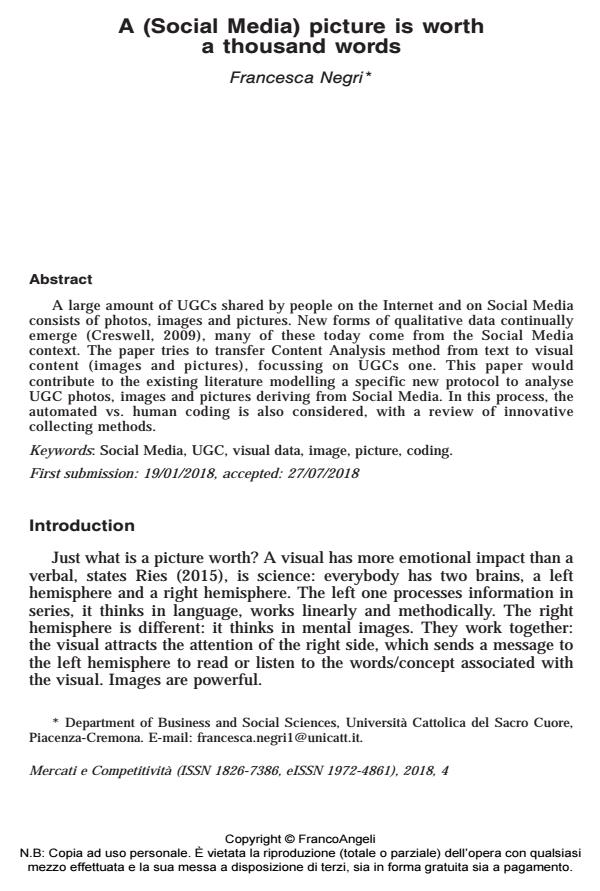A (Social Media) picture is worth a thousand words
Titolo Rivista MERCATI & COMPETITIVITÀ
Autori/Curatori Francesca Negri
Anno di pubblicazione 2018 Fascicolo 2018/4
Lingua Inglese Numero pagine 18 P. 47-64 Dimensione file 508 KB
DOI 10.3280/MC2018-004004
Il DOI è il codice a barre della proprietà intellettuale: per saperne di più
clicca qui
Qui sotto puoi vedere in anteprima la prima pagina di questo articolo.
Se questo articolo ti interessa, lo puoi acquistare (e scaricare in formato pdf) seguendo le facili indicazioni per acquistare il download credit. Acquista Download Credits per scaricare questo Articolo in formato PDF

FrancoAngeli è membro della Publishers International Linking Association, Inc (PILA)associazione indipendente e non profit per facilitare (attraverso i servizi tecnologici implementati da CrossRef.org) l’accesso degli studiosi ai contenuti digitali nelle pubblicazioni professionali e scientifiche
A large amount of UGCs shared by people on the Internet and on Social Media consists of photos, images and pictures. New forms of qualitative data continually emerge (Creswell, 2009), many of these today come from the Social Media context. The paper tries to transfer Content Analysis method from text to visual content (images and pictures), focussing on UGCs one. This paper would contribute to the existing literature modelling a specific new protocol to analyse UGC photos, images and pictures deriving from Social Media. In this process, the automated vs. human coding is also considered, with a review of innovative collecting methods.
Parole chiave:Social Media, UGC, visual data, image, picture, coding. First submission: 19/01/2018, accepted: 27/07/2018
Francesca Negri, A (Social Media) picture is worth a thousand words in "MERCATI & COMPETITIVITÀ" 4/2018, pp 47-64, DOI: 10.3280/MC2018-004004